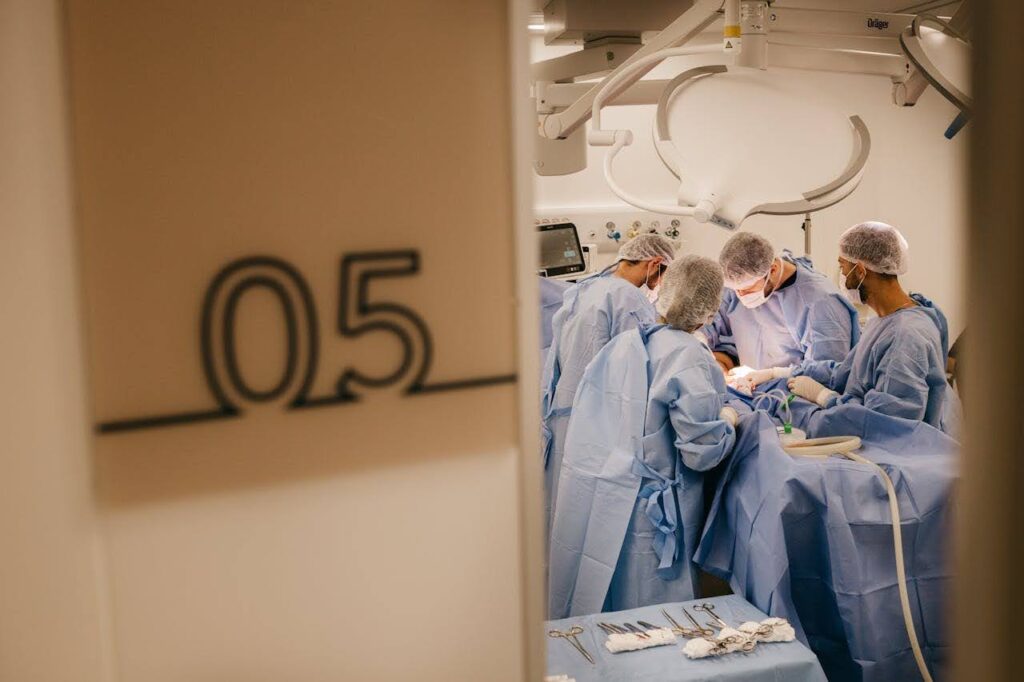Anaesthesiology is more than just putting patients to sleep—it’s about ensuring comfort, safety, and care before, during, and after medical procedures. As a medical student pursuing a medicine degree, you’ll explore how anaesthesiologists manage pain, monitor vital signs, and make critical decisions in high-pressure situations, playing a key role in every successful surgery and recovery.
What is Anaesthesiology?
Anaesthesiology is a medical speciality focused on administering anaesthesia to ensure patients remain pain-free and unconscious during surgery. It also involves perioperative care, pain management, resuscitation, and critical care medicine. Anaesthesiologists monitor vital functions, regulate anaesthetic levels, and manage medical emergencies, ensuring patient safety before, during, and after procedures across various medical settings.
Core Concepts and Goals
Anaesthesiology revolves around three primary objectives: amnesia, analgesia, and narcosis. These principles allow for painless surgeries by inducing a reversible loss of consciousness, suppressing pain, and achieving some degree of muscle relaxation.
Modern anaesthesiologists manage nearly all non-surgical aspects of patient care in the perioperative period, ensuring optimal conditions before, during, and after surgical procedures. Given the high-stakes environment, teamwork is essential. Anaesthesiologists work closely with surgeons but remain primarily accountable to the patient, ensuring safety in the operating room through meticulous monitoring and management of medical gases, environmental factors, and electrical safety measures.
Beyond the operating room, anaesthesiologists are also involved in procedures requiring sedation or general anaesthesia, such as imaging studies, endoscopic procedures, electroconvulsive therapy, and cardiac catheterisation. Additionally, they play a pivotal role in resuscitation efforts and emergency interventions.
Key Responsibilities of an Anaesthesiologist
Anaesthesiologists perform a wide range of critical functions, including:
Preoperative Assessment
Before any procedure, an anaesthesiologist evaluates the patient’s medical history and current medications. This includes conducting airway examinations, identifying potential risks, and formulating an appropriate anaesthetic plan tailored to the patient’s needs.
Administering Anaesthesia
Anaesthesiologists utilise specialised machines to control ventilation, oxygen delivery, and the administration of inhaled anaesthetics. They are responsible for ensuring the correct dosage and adjusting anaesthetic levels as needed during procedures.
Patient Monitoring
Constant vigilance is required to monitor cardiovascular function, oxygenation, ventilation, circulation, and temperature. Any signs of distress or complications must be addressed immediately.
Pain Management
Anaesthesiologists oversee pain control during and after surgery, managing both acute and chronic pain conditions through medications and interventional procedures.
Emergency Response & Resuscitation
These specialists are trained to handle acute medical emergencies, including resuscitation, airway management, and fluid therapy in critical situations.
Specialisations in Anaesthesiology
 Many anaesthesiologists choose to specialise in specific areas of practice, such as:
Many anaesthesiologists choose to specialise in specific areas of practice, such as:
- Cardiothoracic Anaesthesia: Managing patients undergoing heart and lung surgeries, requiring in-depth knowledge of circulatory physiology and advanced monitoring techniques.
- Critical Care Medicine: Working in intensive care units, managing critically ill patients with complex medical conditions.
- Neuroanaesthesia: Specialising in anaesthesia for neurosurgical procedures, requiring expertise in neurophysiology.
- Obstetric Anaesthesia: Providing pain relief during labour and anaesthesia for caesarean sections while ensuring maternal and foetal safety.
- Paediatric Anaesthesia: Handling the unique challenges of administering anaesthesia to infants and children, considering their distinct anatomical and physiological characteristics.
- Pain Medicine: Focusing on both acute and chronic pain management through medications, nerve blocks, and other interventional techniques.
In addition to these specialisations, many anaesthesiologists pursue further certifications, including fellowships in Adult Cardiothoracic Anaesthesia and Paediatric Anaesthesiology. Some also obtain qualifications in Sleep Medicine or Palliative Medicine.
Essential Knowledge and Skills
To excel in this field, anaesthesiologists must develop a strong foundation in the following areas:
Clinical Pharmacology
A deep understanding of pharmacokinetics and pharmacodynamics is crucial. Anaesthesiologists must be proficient in the use of various anaesthetic agents, including intravenous and inhaled anaesthetics, opioids, and neuromuscular blocking agents.
Airway Management
Competency in airway assessment and intubation techniques is essential. Recognising patients at risk for difficult intubation and managing unexpected airway challenges are critical skills.
Regional Anaesthesia Techniques
Anaesthesiologists must be well-versed in regional anaesthesia methods, such as epidurals and nerve blocks, and understand the associated risks and benefits.
Patient Safety and Risk Management
Ensuring patient safety is a top priority. Anaesthesiologists must monitor for potential complications, including anaesthesia-related cardiac arrests, respiratory distress, and intraoperative awareness. They must also implement infection control measures and adhere to protocols designed to minimise medical errors.
Professionalism and Ethical Considerations
Anaesthesiologists are not only medical experts but also patient advocates. Their responsibilities include:
- Effective Communication: Clearly explaining procedures, risks, and post-operative care to patients and their families.
- Ethical Practice: Adhering to legal and ethical guidelines regarding informed consent, transparency in medical errors, and patient rights.
- Lifelong Learning: Keeping up with advancements in anaesthesia techniques, technology, and medical research to provide the best patient care.
Additional Considerations

Beyond their clinical duties, anaesthesiologists contribute to the medical field in various ways:
- Medical Research: Many are involved in research on anaesthesia advancements, pharmacology, and patient safety.
- Global Health Initiatives: Some participate in international medical missions, addressing anaesthesia-related challenges in resource-limited settings.
- Diverse Work Environments: Anaesthesiologists work in a range of medical settings, including hospitals, ambulatory surgical centres, and intensive care units.
Final Thoughts About Anaesthesiology
Anaesthesiology is a complex and rewarding medical speciality that demands technical expertise, critical thinking, and strong interpersonal skills. Whether managing pain, ensuring patient safety in surgery, or responding to medical emergencies, anaesthesiologists play a vital role in modern healthcare. With opportunities for specialisation and continuous learning, this field remains essential in advancing medical science and patient care.
Study anaesthesiology at RUMC, a top medical school in Malaysia with over 400 years of excellence.





